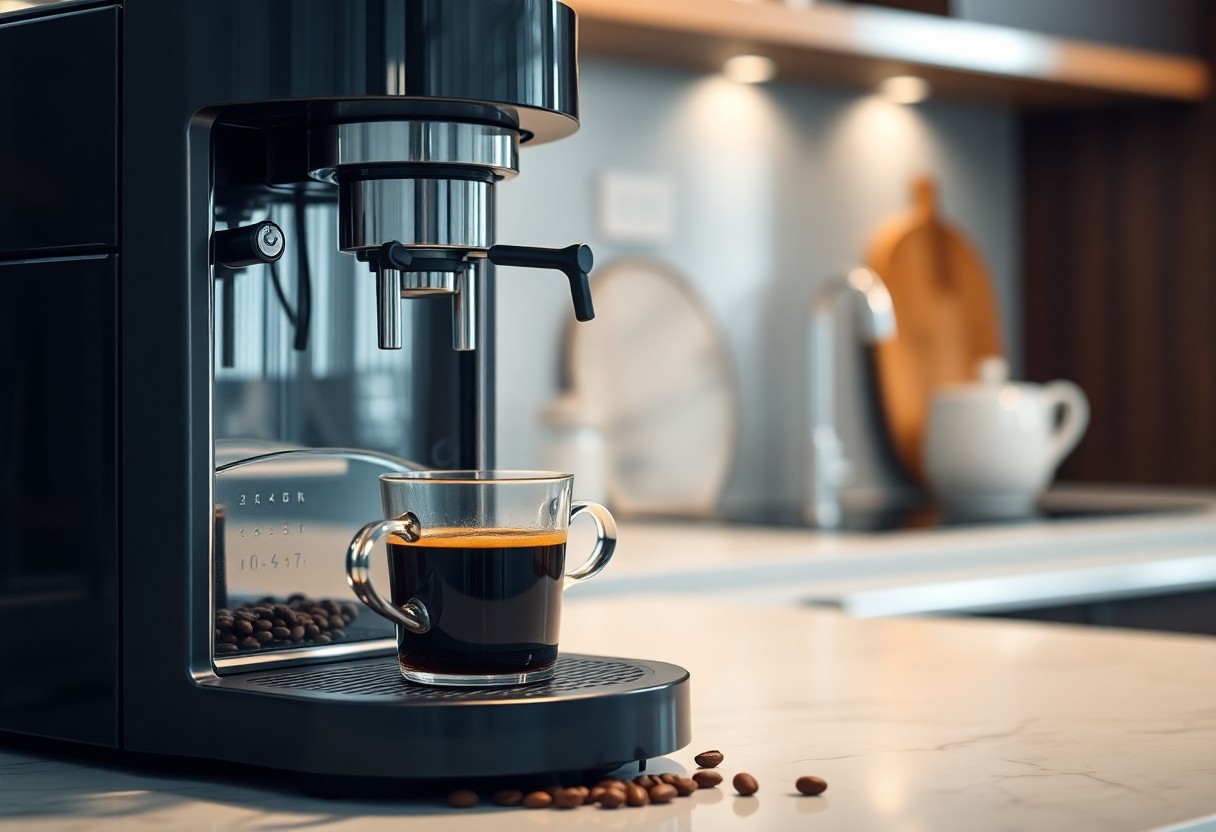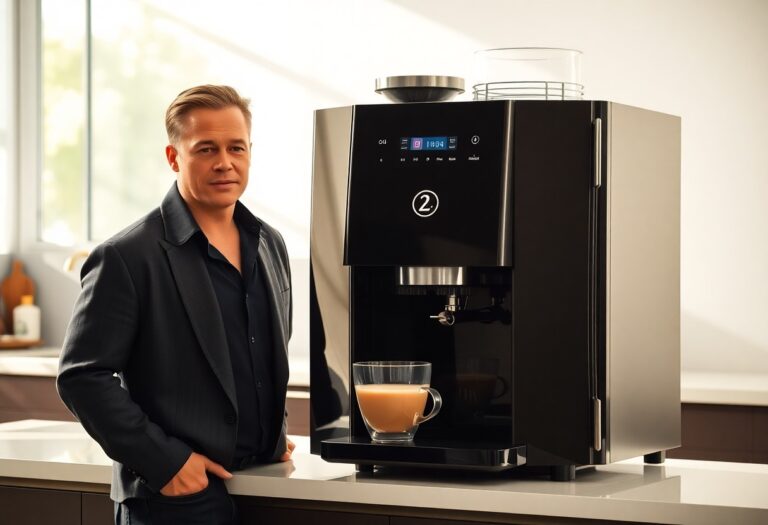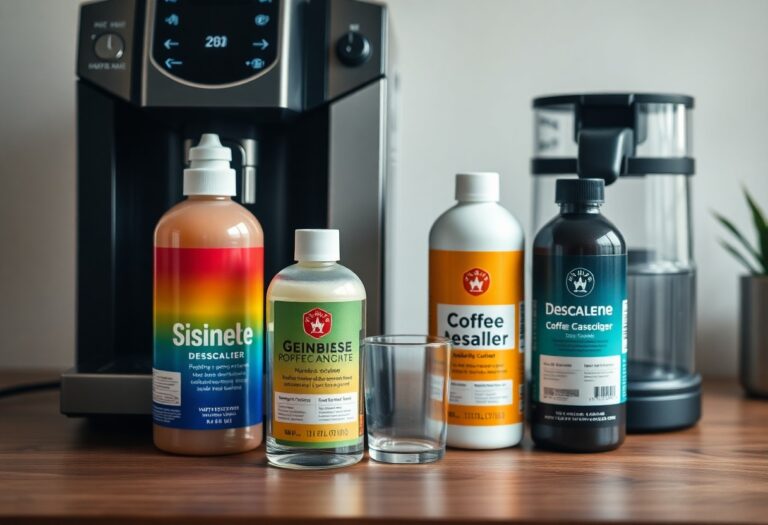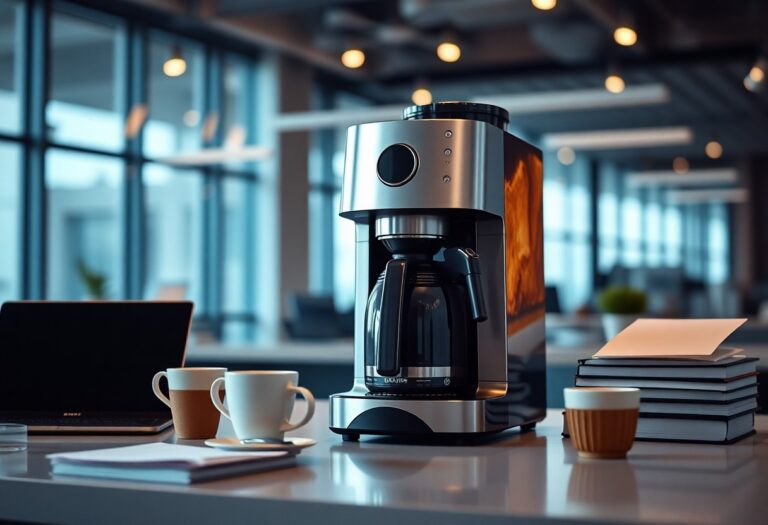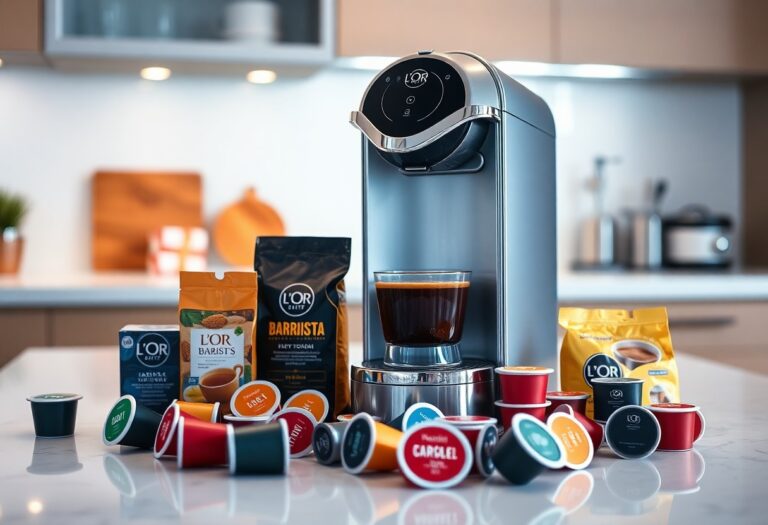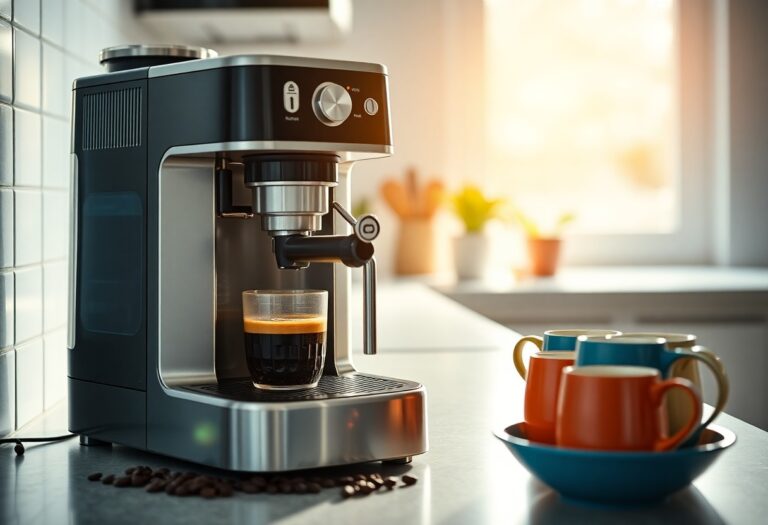What Bean to Cup Coffee Machine – Fresh Grinding Systems
Many coffee enthusiasts like you appreciate the rich flavor and aroma that only freshly ground beans can provide. A bean to cup coffee machine offers you the convenience of grinding your coffee beans on demand, ensuring every cup is as fresh as possible. This innovative system not only simplifies your coffee-making process but also helps you experience the full potential of your favorite beans. In this blog post, you’ll discover the various features, benefits, and considerations of investing in a high-quality bean to cup machine for your coffee needs.
Key Takeaways:
- Bean to cup coffee machines provide a full coffee experience by grinding fresh beans just before brewing, ensuring optimal flavor and aroma.
- These machines often integrate various features such as customizable grind settings, brew strength, and brew temperature, allowing users to tailor their coffee according to personal preferences.
- Many models are equipped with built-in milk frothers for making specialty drinks like lattes and cappuccinos, enhancing versatility in coffee-making.
- Maintenance is simplified with removable brewing units and water tanks, making regular cleaning and upkeep easier to manage.
- Investing in a bean to cup coffee machine may lead to cost savings over time compared to purchasing specialty coffees from cafes.
Demystifying Bean to Cup Coffee Machines
Understanding the intricacies of bean to cup coffee machines can elevate your brewing experience. These innovative devices automate the entire process, from grinding the beans to brewing the perfect cup, thereby simplifying your morning routine while ensuring quality. With this technology, you enjoy a rich, flavorful cup of coffee, minimizing the effort and maximizing the quality of your brew at home.
The Mechanics of Grinding and Brewing
The unique charm of bean to cup coffee machines lies in their integrated grinding and brewing mechanisms. Equipped with high-quality burr grinders, these machines crush beans uniformly, which is imperative for optimal extraction. The ground coffee is meticulously brewed using precise temperature control, ensuring the release of rich aromas and flavors, creating a café-quality experience right in your kitchen.
Comparing Manual vs. Automatic Systems
Choosing between manual and automatic bean to cup systems greatly influences your coffee preparation experience. While manual machines demand more time and effort, they give you precise control over every step. Automatic machines simplify the process, allowing for one-touch brews. Each system caters to different preferences, making the right choice a reflection of your coffee habits.
| Manual Systems | Automatic Systems |
|---|---|
| Requires more hands-on involvement | One-touch operation for convenience |
| Offers precise control over brewing variables | Consistency in flavor with minimal effort |
| Greater opportunity for experimentation | Saves time during busy mornings |
| Generally lower initial costs | May have higher upfront investment |
In terms of practicality, automatic systems are designed for efficiency, enabling you to craft a delicious cup of coffee at the touch of a button. However, if you enjoy experimenting with different flavors and brewing methods, a manual system might be more fulfilling. Both options provide unique experiences, creating a personal coffee routine tailored to your tastes and lifestyle.
The Flavor Revolution: How Freshly Ground Beans Enhance Your Brew
Freshly ground coffee beans can dramatically elevate your daily brew, unlocking complex flavors and aromas that pre-ground coffee simply cannot match. Once you experience the rich tastes and fragrant aromas resulting from grinding your beans just before brewing, you’ll understand that freshness truly matters. This transformation in flavor profile can turn a standard cup of coffee into a gourmet experience, heightening your appreciation for each sip.
The Chemistry of Freshness: Oils, Aromas, and Taste
The magic behind freshly ground coffee lies in the vital oils and volatile compounds within the beans. When ground, these compounds are released, contributing to the aromatic bouquet that envelops you as you brew. The delicate balance of oils impacts not only the aroma but also the taste profile, with fresh grounds providing a richer, more nuanced flavor. As oxygen interacts with these oils, however, they can quickly lose their vibrancy, which is why grinding on demand is vital. This invigorating process reveals the sensory dimensions that add depth to your daily coffee ritual.
Exploring Bean Types: Arabica vs. Robusta
Understanding the differences between Arabica and Robusta beans can significantly influence your coffee experience. Arabica beans, known for their sweeter, softer taste, account for about 60-70% of global coffee production. In contrast, Robusta beans possess a stronger, often more bitter flavor with a higher caffeine content, making them a popular choice for espresso blends. Opting between the two depends on your preference for flavor nuances and brewing methods. This choice shapes your overall coffee journey, guiding you toward your ideal cup.
| Bean Type | Characteristics |
| Arabica | Sweet, mild flavor; lower caffeine content. |
| Robusta | Bitter, full-bodied flavor; higher caffeine content. |
| Origin | Grown mainly in Latin America. |
| Origin | Primarily grown in Africa and Asia. |
| Price | Generally more expensive due to delicate growing conditions. |
Arabica coffee beans grow at higher altitudes and require specific climates to thrive, leading to their refined flavor profile. They often display hints of fruit, sugar, and even floral notes, making them a preferred choice among coffee enthusiasts. Robusta beans are hardier and more resistant to disease, which contributes to their lower cost; however, many find their bitter and earthy taste less appealing. Your selection between these types ultimately defines your coffee experience on multiple levels. This choice will shape the notes you enjoy and the energy boost you seek every morning.
| Characteristics | Flavor Profiles |
| Smooth | Common taste in Arabica. |
| Strong | Common taste in Robusta. |
| Low bitterness | Found in Arabica. |
| High bitterness | Found in Robusta. |
| Fruity notes | Prominent in Arabica. |

Filtering Options: The Hidden Importance of Water Quality
Your coffee’s flavor profile largely hinges on the quality of the water used during brewing. Impurities and minerals can affect not just taste, but also the longevity and performance of your Automatic Coffee Machines. Every sip you take can be a culmination of the water’s journey—from its source to your cup. Optimal filtration can yield a brighter and more balanced brew, significantly enhancing your overall coffee experience.
Water Hardness and Its Impact on Flavor
Water hardness, defined by the concentration of calcium and magnesium, plays a pivotal role in how your coffee tastes. Soft water, with lower mineral content, can lead to a flat, unexciting brew, while hard water may result in a bitter or overly extracted flavor. Striking the right balance is necessary for drawing out the rich nuances in your coffee, allowing the beans’ unique characteristics to shine.
The Role of Filtration Systems in Modern Machines
Modern coffee machines often include sophisticated filtration systems specifically designed to tackle water hardness and impurities. These integrated filters help remove unwanted elements, ensuring that only the best-quality water interacts with your precious coffee grounds. The convenience of built-in systems not only enhances flavor but also prolongs the machine’s lifespan by reducing mineral buildup and preventing potential damage.
Advanced filtration systems in today’s coffee machines utilize multi-stage processes to purify water effectively. Some machines incorporate activated carbon filters that capture chlorine and other chemicals, while others may have ion exchange resins to manage hardness levels. This technology not only guarantees the freshest coffee experience but also aligns with a commitment to quality, allowing you to savor each cup without the worry of poor water quality diminishing your brew.
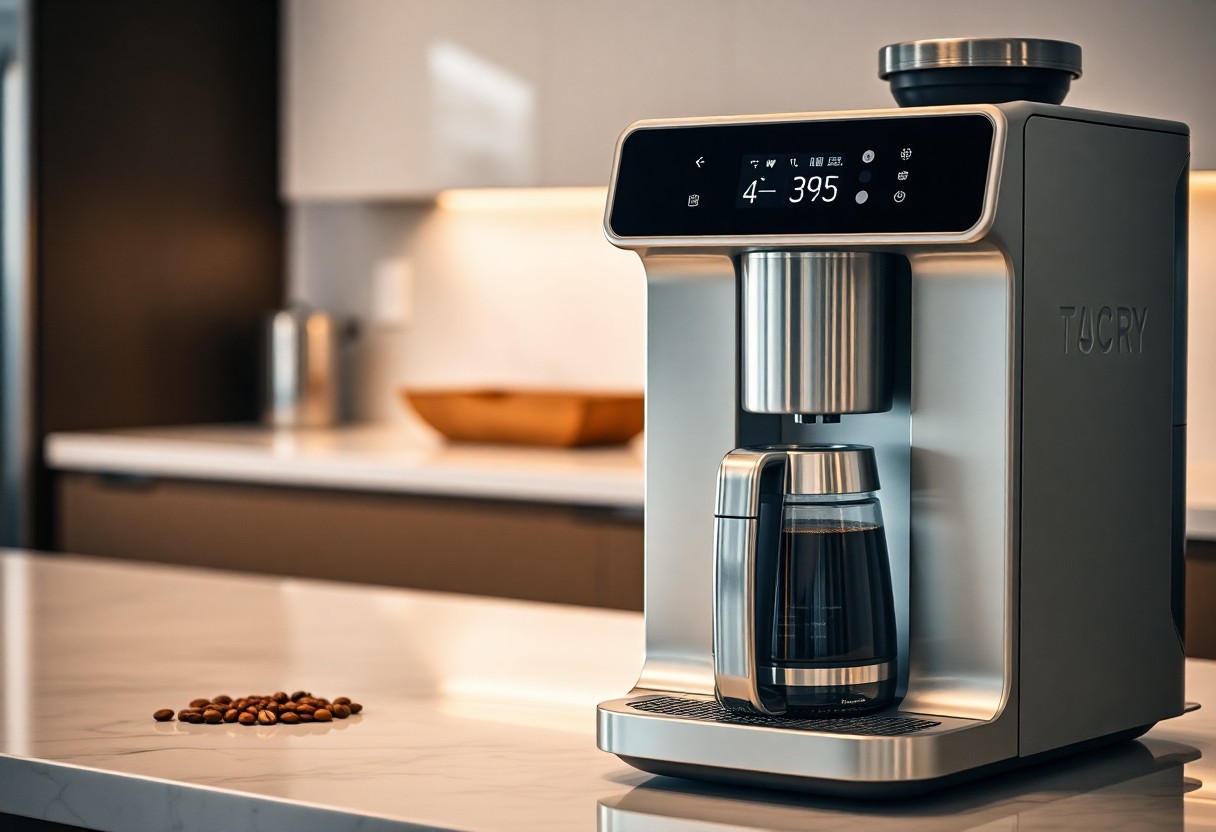
Maintenance Mastery: Keeping Your Machine in Top Shape
Regular maintenance is vital to ensure your bean to cup coffee machine operates at peak efficiency. A well-maintained machine not only enhances the brewing process but also extends the lifespan of your investment. To better understand your machine’s needs, explore How to Choose a Bean to Cup Coffee Machine.
Daily and Weekly Care Essentials
Daily care includes cleaning the drip tray, emptying the used coffee grounds, and rinsing out the brew group. Weekly routines should involve a thorough descaling process and checking for any blockages in the coffee dispensing area. Ensure all removable parts are washed and replaced correctly to maintain optimal functioning.
Troubleshooting Common Issues for Longevity
Encountering issues like inconsistent brewing or strange noises is typical over time. Common troubleshooting steps include checking the water supply, ensuring the coffee ground size is correct, and inspecting for clogs in the coffee pathway. Addressing these concerns promptly can prolong your machine’s service life.
For more intricate problems, consult your user guide or online resources tailored for your specific model. Make it a habit to perform routine checks on the grinder and brew chamber, as improper alignment or wear can lead to uneven extraction and bitter brews. Additionally, keeping your machine clean from oils and residues can prevent performance issues, ensuring your daily coffee experience remains delightful.
Making the Smart Purchase: What to Look For
Choosing the right bean-to-cup coffee machine involves understanding your personal needs and preferences. Consider important factors such as the ease of use, maintenance requirements, and the presence of user-friendly features. Take your time to compare different models and brands to ensure that your investment aligns with your lifestyle and coffee expectations.
Evaluating Features: Grinder Quality, Brew Strength, and Customization
Your machine’s grinder quality determines the freshness of your coffee, which directly impacts flavor. Look for metal burr grinders that provide consistent grind sizes for optimal extraction. Additionally, the ability to customize brew strength and temperature can significantly enhance your experience, allowing you to tailor each cup to your exact taste preferences.
Budget Considerations: Value Over Price
Focus on value rather than just the price tag when selecting your machine. A higher initial investment often translates to better build quality, more durable components, and a wider range of features, which can save you money in repairs and replacements down the line. Consider your daily coffee consumption and personal preferences, as this will help you determine how much you’re willing to spend for the best experience.
Investing in a higher-end machine may feel like a financial burden initially, but it often pays off in the long run. For instance, a top-rated model might cost you around $1,000, yet it can produce café-quality coffee, with features like programmable settings and superior grinder performance. This means you’ll save on costly trips to your local coffee shop, enhancing both your coffee experience and wallet over time. Prioritize features that matter most to you and remember that a well-chosen machine can be an integral part of your daily routine for years to come.
Summing up
Taking this into account, a Bean to Cup Coffee Machine provides you with unparalleled convenience and quality, allowing you to enjoy fresh coffee brewed from whole beans at the touch of a button. By investing in this innovative brewing system, you enhance your coffee experience with freshly ground beans, ensuring vibrant flavors and aromas in every cup. Whether you prefer a rich espresso or a smooth latte, this technology adapts to your preferences, making it an imperative addition to your kitchen for coffee lovers seeking the ultimate brewing experience.
FAQ
Q: What is a Bean to Cup Coffee Machine?
A: A Bean to Cup Coffee Machine is a type of coffee maker that allows you to grind whole coffee beans and brew coffee in one integrated process. These machines typically have built-in grinders and brew units, enabling users to enjoy freshly ground coffee at home or in commercial settings. By grinding beans just before brewing, these machines enhance the flavor and aroma of the coffee.
Q: How does a Bean to Cup Coffee Machine work?
A: A Bean to Cup Coffee Machine works by first grinding whole coffee beans using a built-in grinder. Once the desired grind size is achieved, the machine brews the coffee by passing hot water through the ground coffee. This process can include different settings for brewing strength, temperature, and grind size, allowing for a customized coffee experience according to personal preferences.
Q: What are the benefits of using a Bean to Cup Coffee Machine?
A: The benefits of using a Bean to Cup Coffee Machine include the convenience of having freshly ground coffee at the touch of a button, the ability to customize settings for different coffee types, and the preservation of the coffee’s flavor and aroma due to immediate grinding. Additionally, many models are equipped with features such as milk frothers, allowing users to create espresso-based drinks like lattes and cappuccinos.
Q: Do Bean to Cup Coffee Machines require a lot of maintenance?
A: Bean to Cup Coffee Machines do require regular maintenance to ensure optimal performance and longevity. This includes cleaning the grinder, brew unit, and water reservoir, as well as descaling the machine periodically to prevent mineral buildup. Many machines come with automatic cleaning cycles and easy-to-follow instructions to simplify the maintenance process.
Q: Are Bean to Cup Coffee Machines suitable for all types of coffee?
A: Yes, Bean to Cup Coffee Machines are versatile and can accommodate various types of coffee, including espresso, lungo, and regular drip coffee. Most machines offer settings that allow users to adjust grind size, brew strength, and temperature, making it easy to experiment with different coffee beans and brewing styles to find the perfect cup.

